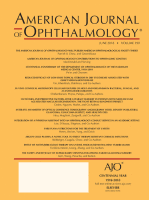Posted on June 15, 2015
Source: American Journal of Ophthalmology

Prevalence of Intermediate-Stage Age-Related Macular Degeneration in Patients With Acquired Immunodeficiency Syndrome
Douglas A. Jabs, Mark L. Van Natta, Efe Sezgin, Jeong Won Pak, Ronald Danis for the Studies of the Ocular Complications of AIDS Research Group
Purpose
To evaluate the prevalence of intermediate-stage age-related macular degeneration (AMD) in patients with acquired immunodeficiency syndrome (AIDS).
Design
Cross-sectional study of patients with AIDS enrolled in the Longitudinal Study of the Ocular Complications of AIDS.
Methods
Intermediate-stage AMD was determined from enrollment retinal photographs by graders at a centralized Reading Center, using the Age-Related Eye Disease Study grading system. Graders were masked as to clinical data.
Results
Of 1825 participants with AIDS and no ocular opportunistic infections, 9.9% had intermediate-stage AMD. Risk factors included age, with an odds ratio (OR) of 1.9 (95% confidence interval [CI] 1.6, 2.3, P < .001) for every decade of age; the prevalence of AMD ranged from 4.0% for participants 30–39 years old to 24.3% for participants ≥60 years old. Other risk factors included the human immunodeficiency virus (HIV) risk groups of injection drug use (OR = 2.4, 95% CI 1.5, 3.9, P < .001) or heterosexual contact (OR = 1.9, 95% CI 1.3, 2.8, P = .001). Compared with the HIV-uninfected population in the Beaver Dam Offspring Study, there was an approximate 4-fold increased age-adjusted prevalence of intermediate-stage AMD.
Conclusions
Patients with AIDS have an increased age-adjusted prevalence of intermediate-stage AMD compared with that found in a non-HIV-infected cohort evaluated with similar methods. This increased prevalence is consistent with the increased prevalence of other age-related diseases in antiretroviral-treated, immune-restored, HIV-infected persons when compared to non-HIV-infected persons.